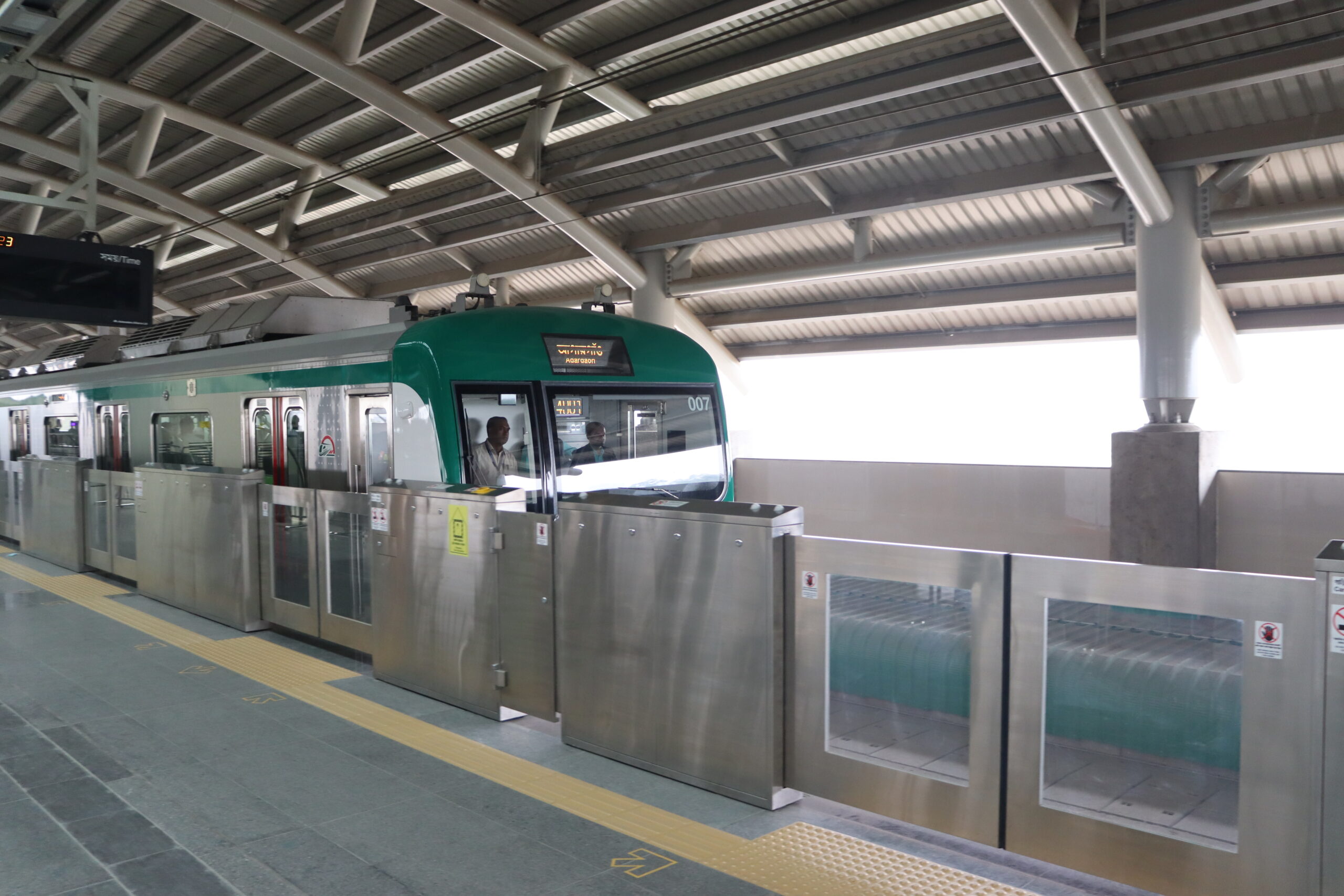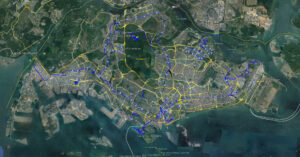US News
New MRT Network Map to Be Rolled Out at All Stations by January 31, 2020
Published
1 month agoon
By
Admin
In a significant move to enhance commuter experience, the Mass Rapid Transit (MRT) system is set to unveil a new network map across all stations by January 31, 2020. This comprehensive update is aimed at making navigation simpler and more intuitive for both locals and tourists, addressing the growing complexity of the expanding rail network.
Background and Need for the Update
Over the years, the MRT system has seen substantial growth, with new lines and extensions being added to accommodate the increasing demand for public transportation. The current map, while functional, has become increasingly cluttered and challenging to read due to the sheer number of lines and stations. Commuters have often expressed concerns about the difficulty in quickly identifying routes, interchanges, and transfer points. This feedback has been a driving force behind the redesign.
The new map aims to address these issues by offering a clearer, more user-friendly design. It will incorporate the latest additions to the network, including new lines and upcoming extensions, providing a complete overview of the system as it stands and future-proofing it for forthcoming expansions.
Key Features of the New Map
Simplified Design:
- The new map adopts a minimalist approach, reducing visual clutter. It employs a clear, straightforward design that prioritizes readability and ease of use. The use of color-coding for different lines has been enhanced, with distinct, vibrant colors representing each line, making it easier for commuters to distinguish between them at a glance.
Geographic Accuracy:
- While maintaining schematic clarity, the new map offers improved geographic accuracy. This hybrid approach helps commuters better understand the real-world layout of the network and how the lines and stations relate to the city’s geography. This is particularly beneficial for tourists and new residents who might not be familiar with the city’s layout.
Enhanced Accessibility Information:
- The new design places a stronger emphasis on accessibility. Stations with facilities for disabled passengers, such as elevators and ramps, are clearly marked. This improvement is in line with the city’s commitment to making public transportation more inclusive for all users.
Real-Time Updates:
- Integration with digital platforms will allow the new map to provide real-time updates. Interactive kiosks and mobile apps will feature the latest information on service changes, delays, and maintenance works. This dynamic element ensures that commuters have access to the most current information, aiding in efficient travel planning.
Interchange and Transfer Clarity:
- One of the standout features of the new map is its emphasis on interchanges and
transfer points. These crucial nodes in the network are now highlighted more prominently, with clear indications of the lines that intersect at each interchange. This makes it easier for commuters to plan their journeys, especially when multiple transfers are involved.
Landmark Integration:
- To further assist with navigation, major landmarks and points of interest have been integrated into the map. This feature helps commuters orient themselves more easily and provides additional context for locating stations relative to popular destinations.
The Design Process

The redesign process involved extensive research and consultation with various stakeholders, including frequent MRT users, design experts, and urban planners. Feedback from commuter surveys and focus groups played a crucial role in shaping the final design.
A key part of the process was benchmarking against other successful transit maps from around the world. The design team studied the London Underground map, New York City Subway map, and Tokyo Metro map, among others, to identify best practices and innovative features that could be adapted to the local context.
Benefits for Commuters
Improved Journey Planning:
With a more intuitive layout, commuters can now plan their journeys more efficiently. The clear depiction of lines, stations, and interchanges reduces confusion and helps passengers identify the quickest and most convenient routes.
Enhanced User Experience:
The user-friendly design enhances the overall commuting experience. Commuters, especially those new to the MRT system, will find it easier to navigate the network, reducing travel-related stress and improving satisfaction.
Time Savings:
The clearer map reduces the time spent deciphering routes and connections. This time-saving aspect is particularly valuable during peak hours when quick decision-making is essential.
Challenges and Solutions
Balancing Simplicity with Detail:
One of the main challenges was balancing the need for simplicity with the inclusion of necessary details. The design team tackled this by prioritizing essential information and using symbols and color-coding effectively. Non-essential elements were either simplified or omitted to avoid clutter.
Catering to Diverse Needs:
The map had to cater to a wide range of users, from daily commuters to occasional travelers and tourists. Ensuring that the map was accessible and useful for all these groups required careful consideration. User testing with diverse groups helped refine the design to meet varied needs.
Future-Proofing the Map
The MRT system is poised for further expansion, with several new lines and extensions planned in the coming years. To accommodate these future developments, the new map has been designed with scalability in mind. The modular design allows for easy updates and additions, ensuring that the map remains current as the network grows.
Implementation and Rollout
The rollout of the new map will be a phased process, starting with major interchange stations and eventually covering all stations by January 31, 2020. During this period, commuters will find both the old and new maps displayed to facilitate a smooth transition. Additionally, the new map will be featured on the MRT website, mobile app, and interactive kiosks, ensuring wide accessibility.
Public Reception and Feedback
Ahead of the official rollout, the new map was unveiled to the public through a series of open houses and exhibitions at key stations. The response has been overwhelmingly positive, with many commuters praising the
clarity and improved functionality of the new design. Feedback from these events has been invaluable, allowing the design team to make final adjustments before the complete rollout.
Commuters have particularly appreciated the emphasis on accessibility and the clearer indication of transfer points. The integration of landmarks and real-time updates has also been well-received, with many noting that these features significantly enhance their ability to navigate the network.
Conclusion
The introduction of the new MRT network map marks a significant milestone in the continuous improvement of public transportation infrastructure. By prioritizing user experience, accessibility, and clarity, the new map promises to make commuting easier and more efficient for everyone.
As the MRT system continues to expand, the new map will play a crucial role in helping commuters adapt to changes and navigate the network with confidence. The thoughtful design process, extensive user feedback, and future-proofing measures ensure that the new map will serve the needs of the city’s growing population for years to come.
Looking Ahead
Beyond the rollout of the new map, the MRT authority is committed to ongoing improvements in the public transportation system. Future plans include:
- Regular Updates and Maintenance: Ensuring that the map remains current with any changes to the network.
- Enhanced Digital Integration: Developing more advanced digital tools, such as augmented reality features in the mobile app, to assist with navigation.
- Sustainability Initiatives: Incorporating sustainable practices in the expansion and maintenance of the MRT network to support the city’s environmental goals.
The new MRT network map is not just a tool for navigation; it represents a forward-thinking approach to public transportation, one that is responsive to the needs of its users and adaptable to the future. As the city evolves, so too will its transportation infrastructure, with the new map serving as a foundational element in this ongoing journey.
You may like

Damian Lillard Net Worth

The Ultimate Guide to Summer Fun at Lake Clementine

How To Build a Metal Raised Garden Bed

Simcity Forum: Discovering the 5 Benefits of Simplicity

Wesley Snipes on Art, Excellence, and Life After Prison

Cufflink Couture: Elevating UK Style with Exquisite Gold and Silver Designs

Broadway Shows by Year – Opened in 2023

Medical Billing Process and Practices to Reduce Costs

Andre Hakkak: A Financial Titan’s Journey and Net Worth Breakdown

Michelle Smallmon: A Comprehensive Overview

What is Evırı? Everything You Need to Know

Comprehensive Guide to Roofing Takeoff Services, Piping Estimating Services, and Drywall Takeoff Services

Maximizing Efficiency and Accuracy with Construction Takeoff and Estimating Services

Unveiling the Mysteries and Benefits

Cape Cod Home Additions: Enhancing Your Seaside Living
Showcase Of Ark: Survival Evolved (2017) Icons And Banners

Los Angeles News and Events

Metal Gear Solid 3 Remake: Everything We Know So Far

Pedrovazpaulo Executive Coaching

A Guide to a Healthy Life with Well Health Organic

Damian Lillard Net Worth

The Ultimate Guide to Summer Fun at Lake Clementine

How To Build a Metal Raised Garden Bed

Simcity Forum: Discovering the 5 Benefits of Simplicity

Wesley Snipes on Art, Excellence, and Life After Prison

Cufflink Couture: Elevating UK Style with Exquisite Gold and Silver Designs

Broadway Shows by Year – Opened in 2023

Medical Billing Process and Practices to Reduce Costs

Andre Hakkak: A Financial Titan’s Journey and Net Worth Breakdown








